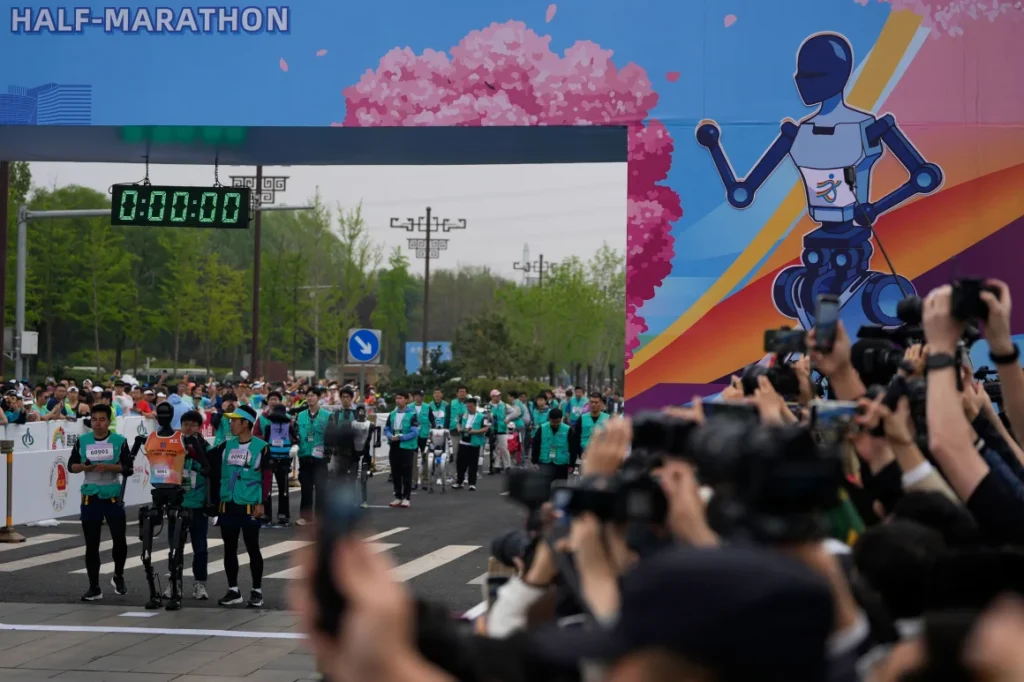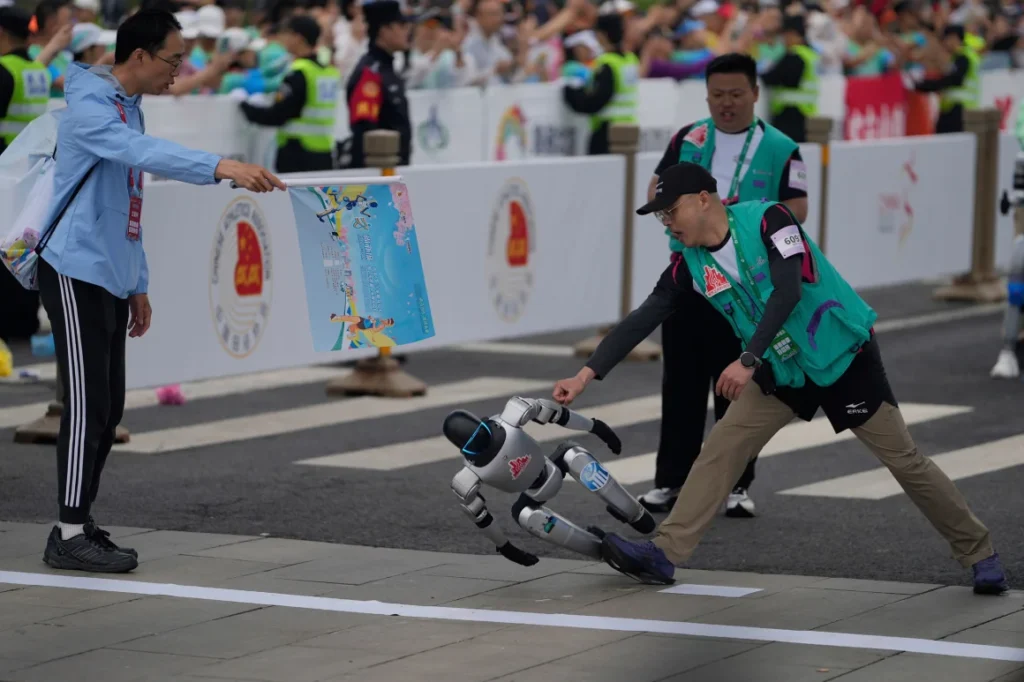CNN Hong Kong —
If you’ve ever imagined that robots challenging humans on a road course would lead to some kind of high-tech dystopia, at least for now, that worry is premature.
More than 20 bipedal robots gathered in Yizhuang, southeast of Beijing, China, to compete with 12,000 human runners over a 21-kilometer rugged course in the world’s first humanoid half marathon on Saturday. Although the robots showed amazing engineering and algorithmic prowess, they still have a long way to go to challenge humans in terms of endurance and speed.
The race attracted teams from many Chinese companies and universities, demonstrating China’s rapid development in humanoid robotics technology. Although the United States still leads the field, China is catching up quickly.

The “Tiangong Super” robot, which stood out in the race, was developed by the Beijing Humanoid Robot Innovation Center and finished the race in 2 hours and 40 minutes, becoming the first robot to complete the race. By comparison, the human world record holder, Ugandan runner Jacob Kiplimo, ran 56 minutes and 42 seconds, while the men’s champion finished in just 1 hour and 2 minutes.
Despite the final defeat, the performance of Tiangong Super is still considered a breakthrough. Tang Jian, the center’s chief technology officer, said the robot’s extra-long leg structure and an advanced algorithm that can simulate the human running rhythm are the key to its excellent performance. He added: “I don’t want to brag, but I don’t think there is a humanoid robot in the West that can compete with Tiangong Super in sports.”
It is reported that Tiangong Super only changed its battery three times during the competition and completed the competition with the help of an assistant who held the robot’s back while running to prevent it from falling. In fact, almost all participating robots need similar assistance, some are equipped with safety belts, and some are even controlled by remote controls.
To ensure fairness, the rules of the competition allow robots to change batteries or replace the entire machine on the way, but each robot change will be penalized 10 minutes.
The Beijing Daily reported that the race route started from a suburban park, passing through gentle slopes and winding tracks, with robots and human runners running side by side on a fenced track. Many human runners have shown great interest in these “iron runners” running, and many of them took out their phones to record the moments of this cross-species competition.
In recent years, China’s technology promotion in the field of humanoid robots has gradually heated up. From cycling, roundhouse kicks to side flips, videos of various robots showing off their skills have been widely circulated on the Internet, and official media have even regarded them as potential engines of future economic growth.
In a policy document released in 2023, China’s Ministry of Industry and Information Technology clearly listed humanoid robots as “a new frontier of technological competition” and set a strategic goal of achieving large-scale production of core components and supply chain security by 2025.
Alan Fein, a computer science, artificial intelligence and robotics expert at Oregon State University, told CNN that he was “very surprised” that the robots could complete such a high-intensity competition, and admitted: “I bet none of them would last.” He also pointed out that despite the continued efforts of China, the United States and Europe to develop humanoid robots, no team can be regarded as an “industry leader”.
“This competition is very interesting, and I am very happy to see such diverse developments in this field around the world.” Fein added.

Reference: https://www.cnn.com/2025/04/19/asia/china-first-humanoid-robot-half-marathon-intl-hnk/index.html


GOGO~